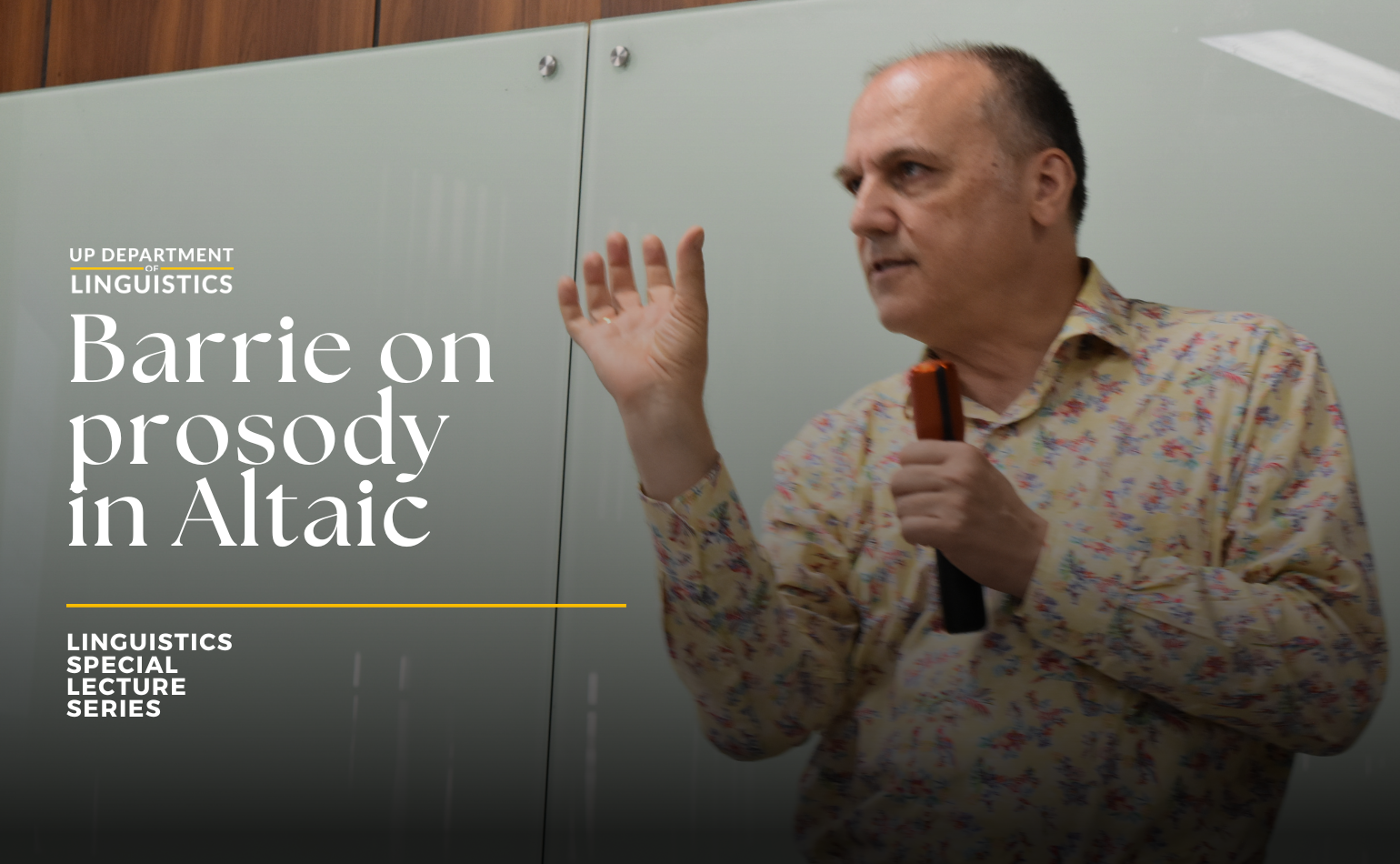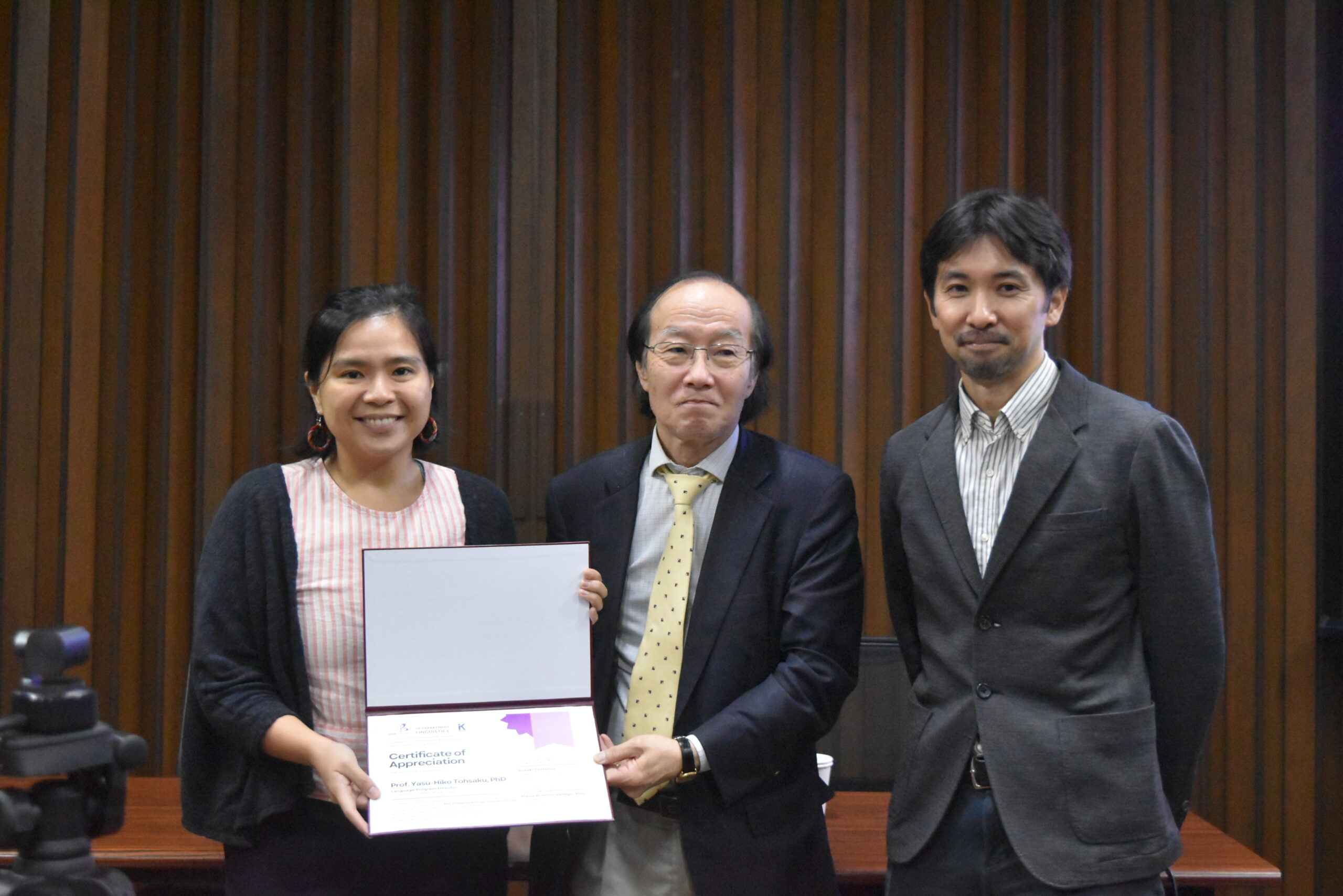
“It is the teacher’s duty to create good students, and in order to achieve it, the teachers must become good teachers first […] The youth will build the future, and the teachers will nurture the youth [translated from Japanese],” Dr. Yasu-hiko Tohsaku, professor and language program director at the University of California San Diego, said as he returned to the Palma Hall AVR for the 38th Philippine Nihongo Teachers’ Forum (PNTF) co-organized with The Japan Foundation, Manila (JFM) with support from The Kamenori Foundation.
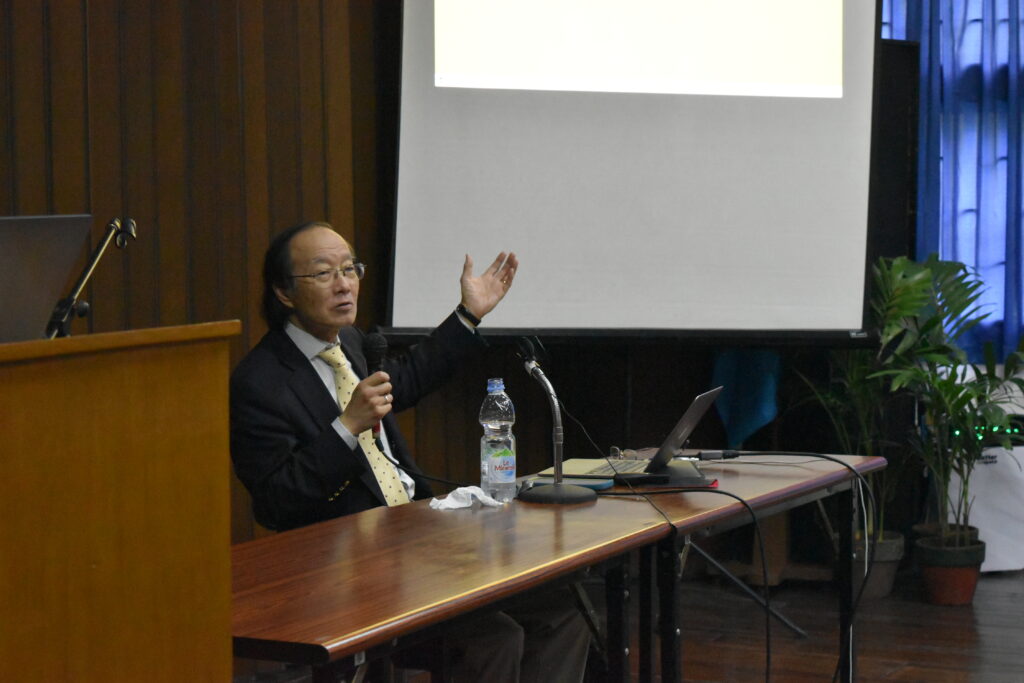
The 13 March event had the theme, “Paradigm Shift in Assessment: From Measuring Learning Outcomes to Facilitating Learning,” and had two components: the AM session was a keynote lecture from Dr. Tohsaku, while the PM session was allotted for the poster presentation of invited speakers and workshop of the seminar participants.
In with the new
“It is easy to teach in the traditional way,” the professor said, with Assistant Professor Farah C. Cunanan providing the translation from Japanese to English and Filipino. “We need new energy to teach in the new way,” he added, also mentioning the successful adoption of these novel strategies to countries like Australia and Finland. “There are no grades in Finland, and yet they get the best results.”
Grades then, he explained, are not the exams’ purpose; the goal is to show good learning practices. However, up until now, language education is mostly focused on item-by-item tests. Since recent research reveal that knowledge is not universal – meaning there is no single correct answer – assessments should instead focus on performance goals: We should ask, “what can the student do?” As an example, Dr. Tohsaku suggested that the Japanese past tense form た could be taught by making students tell an old story.
The role of the teacher
“Before, all information came from the teacher’s mind and are just transferred to the students,” he said. But learning should not be a passive process from the teacher to the student. “Rather, knowledge is created actively within the learner’s brain. Education and learning are not about dictating what to think but about teaching how to think.”
He added that relying on the transfer method will result to a uniformity in thought, removing creativity in learning: “everyone will think in the same way as the teacher does.”
Previously, the understanding was that there existed a single body of knowledge, leading to objective testing. Now, recognizing the diversity of answers, testing has shifted towards more subjective measures.
Assessments were conducted individually before. However, the current approach also includes group evaluations, acknowledging the value of collaborative learning and performance.
Rethinking exams
Traditionally, summative assessments were paramount, focusing on the testing of learning as demonstrated through exams. Currently, the emphasis is on the process of learning, with formative assessments—conducted throughout the learning journey.
While summative assessments like the JLPT are high stakes, evaluating learners at the end of their study and often influencing future opportunities (termed “assessment of learning”), formative assessments are designed to support ongoing learning processes (referred to as “assessment for learning”).
“The focus on formative assessments does not negate the value of summative assessments but rather emphasizes the evolving role of educators in fostering a learning environment where continuous assessment plays a key role in student development,” he added.
As Dr. Tohsaku explains, the traditional method may seem easier because it requires less effort to maintain, but complacency within this method does not make us effective teachers. Our duty is to nurture Filipino students, a commitment that demands time and effort, and this dedication serves not just the students but the country as well.
Formative assessments (FAs) act like a GPS for our learning goals, indicating our progress towards achieving them. While summative assessments have been traditionally important, FAs are more important as they guide us to reach our goals more effectively. Grading may be significant, but feedback is paramount; it transforms assessment into a tool for, of, to, and as learning.
On the language of instruction
“Many of you may be struggling with everything being in Japanese, but this will be beneficial in the long run. Our brains are remarkable, and when constantly exposed to Japanese, the areas governing Japanese grammar and vocabulary are activated,” the speaker replied to an audience member’s question. “Despite the struggle, it’s beneficial, and we should seek more opportunities to immerse ourselves in the language, which will also aid our classes. Assessment defines learning activities: the way we test our students’ learning also shapes how they prepare for class. Backward design starts with class learning goals; assessment activities should be prepared in advance. This informs how teachers should instruct students to achieve the goals through assessment. We should not lower our goals if they seem unattainable; instead, with backward design, since the assessment is predetermined, we focus on enabling students to meet these goals through assessments.”
“For example, I make a test beforehand. After the class is finished, this test will be administered. Explaining this, students will prepare accordingly, learning through the test— a concept known as the washback effect. Good teaching results in good learning, but if teaching is centered around a poor test, it will reflect poorly on the teaching. At the end of an activity, there might be an oral test. Students will prepare for it, aiming for a better score. A rubric, an evaluation criterion, informs students how to improve their score. By providing a rubric before class, students understand the evaluation criteria and prepare accordingly. They know their pronunciation, gestures, and grammar will be assessed. Thus, when tested, students don’t just stand; they use gestures to enhance understanding. This approach fosters better learning. Tests can transform students, creating better learners.”
Topics and their assessments
A workshop on teaching methods and assessments was led by Dr. Tohsaku at the PM session of the seminar. In it, participants were tasked to think of formative and summative assessments for select topics and scenarios in Japanese language teaching. This was followed by research and poster presentations, after which the outputs from the workshop were shared to the audience.
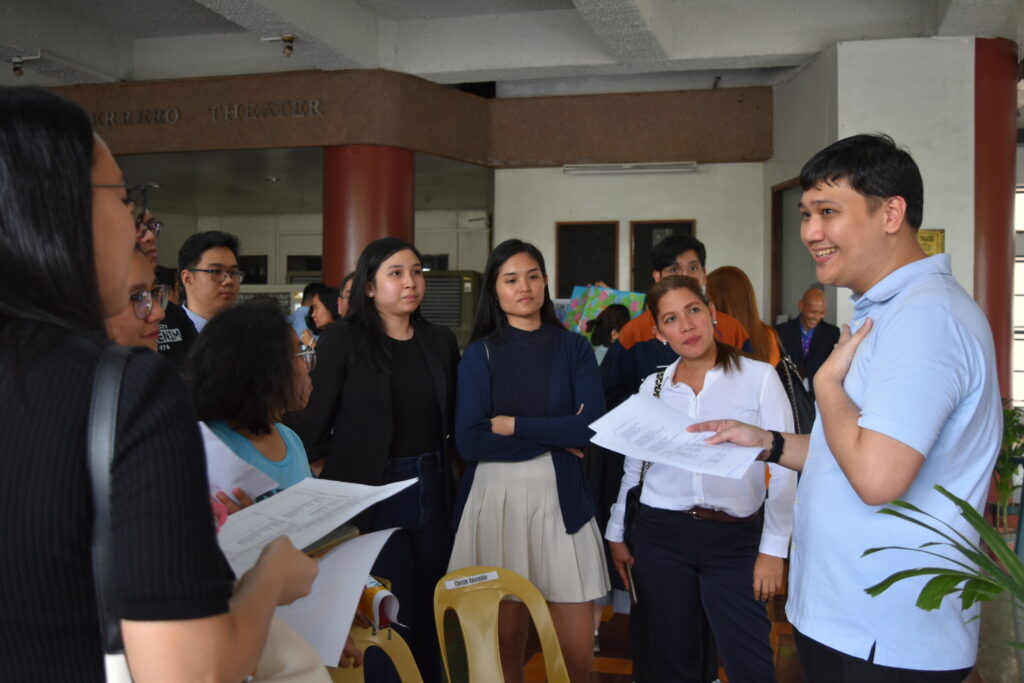
Stay tuned at the Department’s website and social media pages to get updates on our next events especially as we are celebrating the 100th year since the Japanese language was first taught at the university.
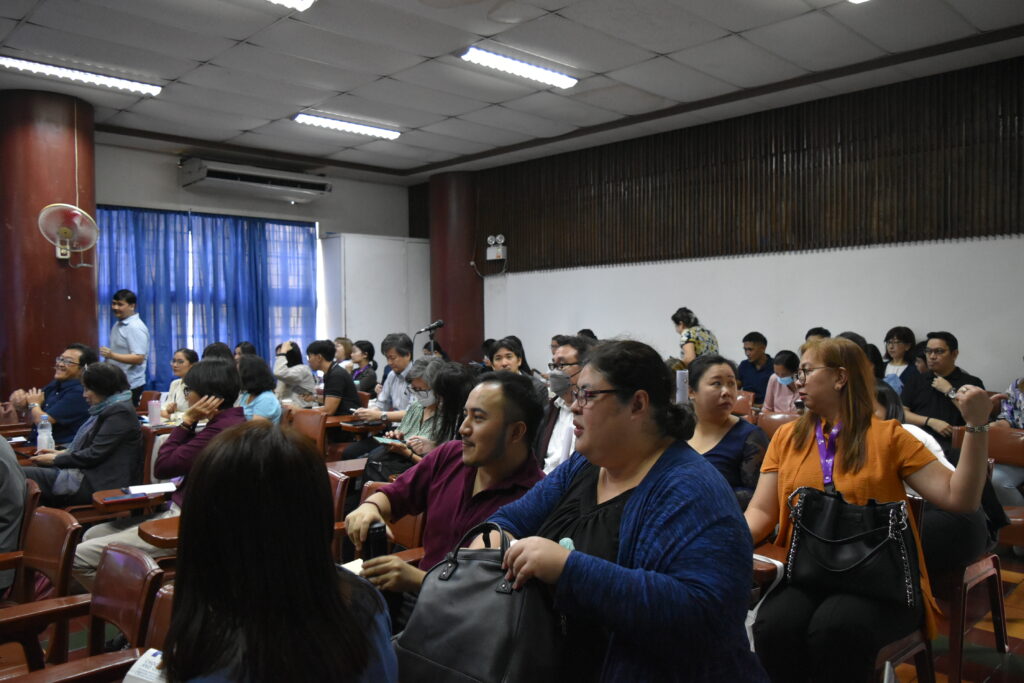
Photos by Lilie Marie Delos Santos
Published by Michael S. Manahan


